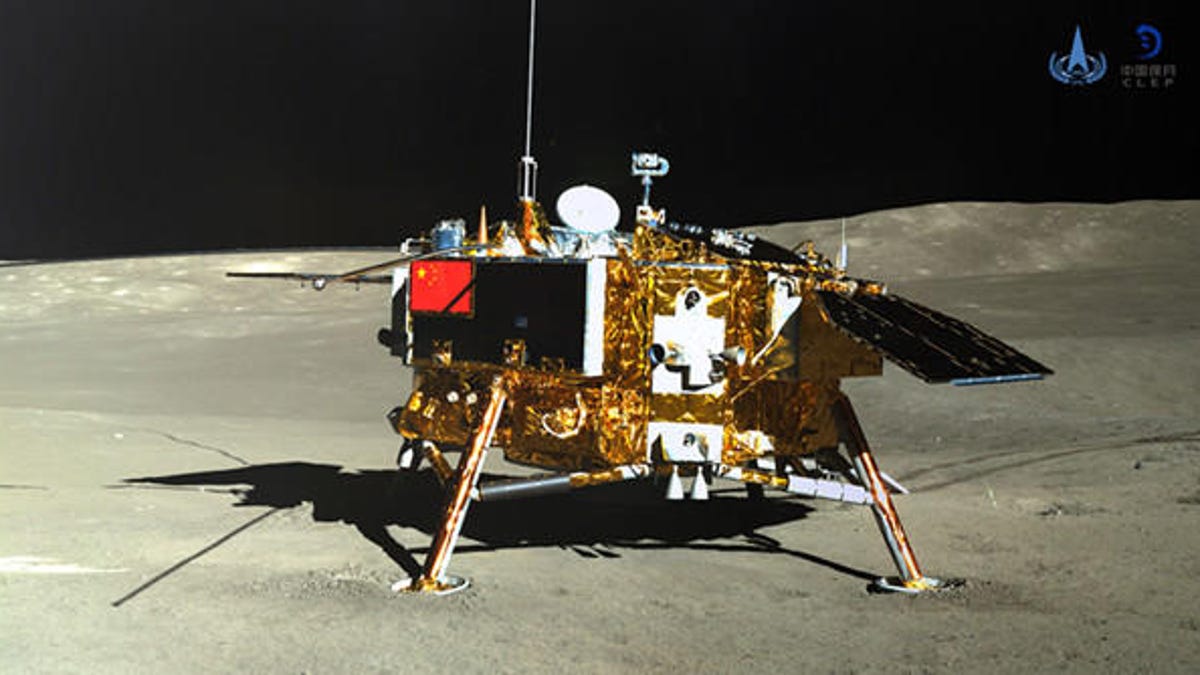China's going back to the Moon and this time it's bringing back samples
Detailing their space plans for 2019, China reveals how their next Moon mission will bring lunar samples home for the first time in decades.

Chang'e 4 checks out the far side of the moon.
Landing on the dark side of the moon was just the beginning.
The China Aerospace Science and Technology Corporation (CASC) has plans to send more than 50 spacecraft into space with more than 30 launches in 2019, according to Chinese state media. That includes sending another lunar lander to the Moon at the end of the year on the first sample return mission in decades.
The country made history on Jan. 3 when the Chang'e 4 lunar probe landed in Von Karman crater on the moon's mysterious far side. A few hours after landing, the probe sent back the first photo of the moon's unexplored side. Chang'e 4 launched Dec. 7 and entered lunar orbit five days later.
Baohua Yang, vice president of the China Aerospace Science and Technology Corporation, said at a press conference that major missions such as the third Long March 5 large carrier rocket will be launched in July, Xinhua Net reported on Friday local time.
A test version of the Long March 5B carrier rocket is already under development.
More importantly, the fourth Long March 5 carrier rocket will reportedly be designed to take the Chang'e 5 lunar probe to the moon and bring back lunar samples by the end of this year. The probe will be a little more complex than China's previous Moon explorer, this time composed of four different core parts -- the orbiter and lander, plus a returner and an ascender -- and 15 sub-systems. The moon samples it collects will be sealed in a container and taken to labs for analysis and research.
The ascender will rise from the Moon's surface with samples in tow and dock with a Chinese orbiter zipping around the moon's surface, before returning to Earth and landing at the Siziwang Banner (County) of Inner Mongolia Autonomous Region, according to Peng Jing, deputy chief designer of the probe at CASC.
If it successfully returns with samples, the Chang'e 5 probe will be the first spacecraft to return samples since the Soviet Union's Luna 24 brought back moon rock in 1976.
The CASC didn't immediately respond to a request for comment.
Originally published at 3:40 p.m. PT
Updated at 5:50 p.m. PT: Adds additional information about Chang'e 5 plans for 2019
NASA turns 60: The space agency has taken humanity farther than anyone else, and it has plans to go further.
CNET Magazine: Check out a sample of the stories in CNET's newsstand edition.



